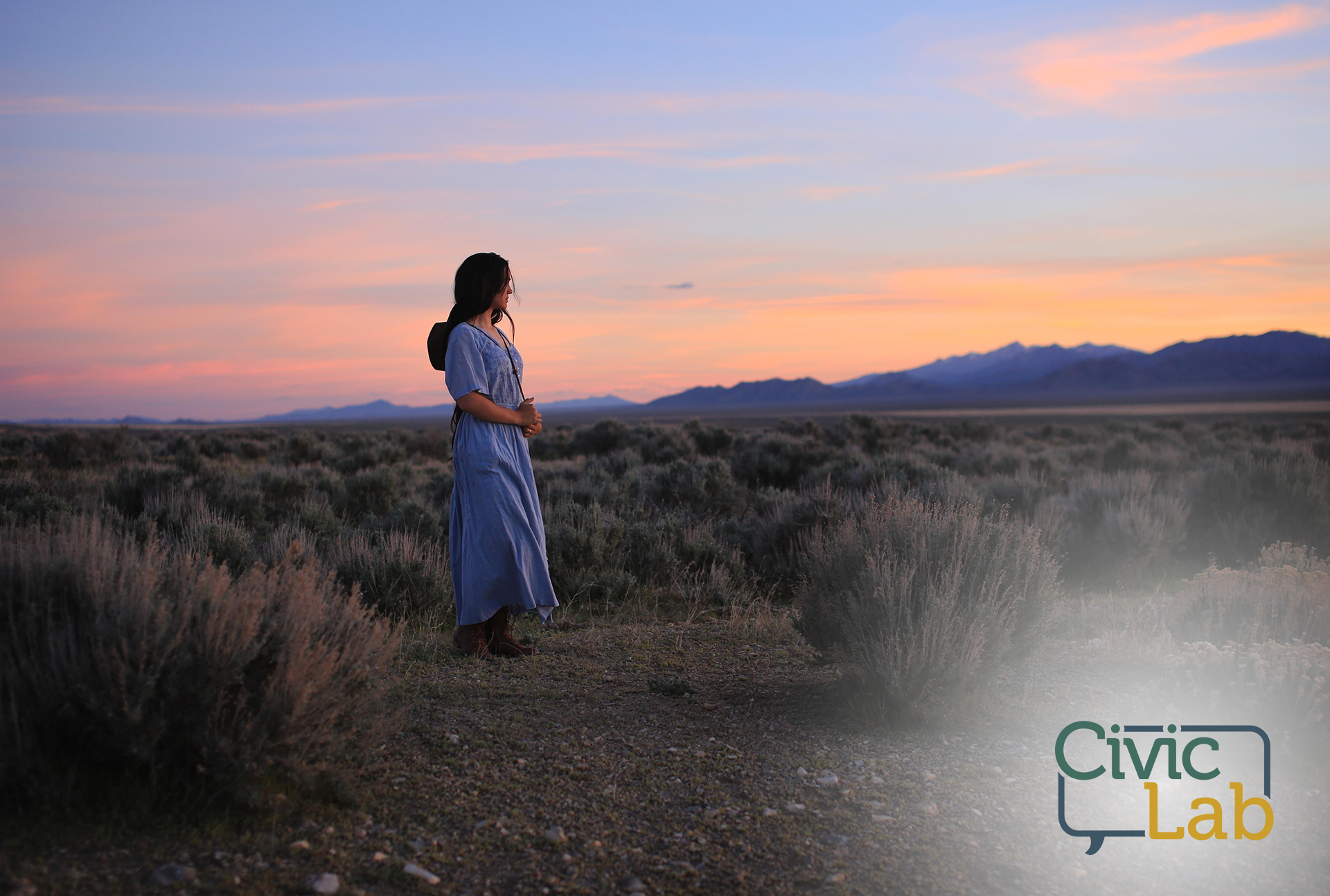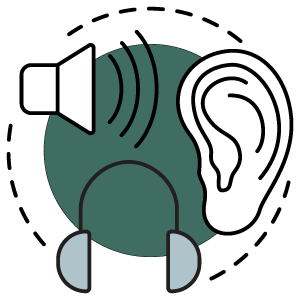Civic Lab Online: The Land Back Movement
Posted on November 1, 2021 at 6:00 am

About Civic Lab Online
Civic Lab Online provides information on issues facing our community for you to explore. Take a look at thought-provoking materials for teens and adults that allow us to engage in open conversation and grow together as a community. You’ll find all past topics on the Civic Lab Online web page.
The Land Back Movement: Fast Facts
The nationwide efforts of tribes to regain native homelands have been making headlines for the past few years. Where did this resurgence come from, and what could it mean for public lands, the environment, and indigenous people if it succeeds?
What is the “Land Back” movement, and where did it come from? Why are scientists and conservation groups involved?
The phrase “Land Back” was popularized in 2018 by Canadian Arnell Tailfeathers, who used it as a hashtag in memes criticizing Prime Minister Justin Trudeau’s relationship with pipeline developers and lack of land reparations, or efforts to return land taken by illegal means.
In 2019, Indigenous academics in Australia produced research that showed when tribes are given political agency over managing land, they use best practices for water and forest conservation. Additional research shows there is greater biodiversity on land managed or co-managed by First Nations than even federally managed national parks or protected lands.
Conservationist groups begin to partner with tribes in order to help them purchase back ancestral homelands in exchange for various legal guarantees that the land will be preserved.
The way First Nations care for land often involves a different approach from that of the federal government. For example, using controlled burns rather than burn bans to prevent wildfires, restoring wildlife to habitats on both tribal and public land, and bringing back endangered species such as bison and buffalo (three tribes in Washington state are involved in these efforts).
On July 3, 2020, the Indigenous-led organization NDN organized a demonstration in which protestors blocked off the highway leading to Mt. Rushmore, where President Donald Trump was expected to visit. This marked the beginning of Land Back as an organized movement.
This was the latest in decades of protests at Mt. Rushmore. The Black Hills, sacred lands reserved for the Lakota (Teton Sioux) in the 1868 Treaty of Fort Laramie, were quickly reclaimed by the federal government using the Indian Appropriations Act of 1876 after General Custer and his army confirmed the presence of gold. During the Red Power Movement in 1970, Lehman Brightman famously led a group of 30 in occupying Mt. Rushmore, demanding the Black Hills be returned. A Supreme Court case ruled in favor of the Sioux in 1980, but the cash settlement was rejected by tribal leaders who feared it would undermine the return of the land.
During the July 2020 protest, 21 protestors were arrested. After a nationwide showing of support, all charges were dropped except those of organizer Nick Tilsen.
In response, the Land Back Manifesto was released by NDN and the current Land Back campaign officially began on Indigenous People’s Day, October 12, 2020.
In 2021, Deb Haaland became the first Native woman to be appointed Secretary of the Interior, which oversees the Bureau of Land Management (BLM). She has introduced the 30 By 30 Resolution to Save Nature to the House of Representatives (Senator Tom Udall introduced the same measure to the Senate), which would commit to conserving 30 percent of the United States’ land by the year 2030.
In August of 2021, Charles F. Sams, III, a Navy veteran with more than 25 years of experience working in conservation management with both tribes and government agencies, was nominated as director of the National Park Service. If appointed, he will be the first Indigenous person to hold the post.
Have any First Nations had their land returned? What about land in the state of Washington? What type of land reparations are there?
In 2014, the Nisqually Tribe purchased back some of their land and signed an agreement with Washington State Parks to create Nisqually Park, which includes public access to those lands.
After the Wiyot Tribe purchased part of Duluwat Island in Northern California, the city of Eureka agreed to return the rest of the island when it went up for sale. This marks the first time a U.S. municipality has returned land without strings attached.
In 2020, the Esselen Tribe regained two miles of California land with the assistance of Western Rivers Conservancy and a grant for the $4.5 million needed.
In December 2020, the Ojibwe Reservation Restoration Act in Minnesota acknowledged that Ojibwe land was sold illegally. It required the transfer of 11,760 acres from the U.S. Forest Service to the United States of America in trust (when the secretary of the Department of the Interior acquires title to property and holds it for the benefit of a Native American tribe or individual tribal members) for the Leech Lake Band of Ojibwe.
In March of 2021, 150 years after the title was changed when Maine became a state, the Passamaquoddy Tribe purchased Pine Island with the help of conservation charities.
In October of 2021, a 9,243-acre ranch in Washington state was purchased by Conservation Northwest, who agreed to return the land to Colville Tribes provided that a land covenant guarantee that the land will be preserved rather than developed.
The planned removal of four dams in Southern Oregon and California, the largest dam removal project in history, was also hailed as a “Land Back” victory, though removal plans are unlikely until at least 2024, and by then the damage to the salmon population may be permanent. A source of local controversy is the Yurok and Karuk tribes’ senior water rights, which they have used to divert water to salmon populations rather than farmers during drought season.
Areas with dense population cannot be easily bought back. Efforts such as Real Rent Duwamish in Seattle encourage residents to pay “rent” as a donation to the Duwamish Tribe, who have not received compensation for their broken treaty and have no federal recognition.
Read, Watch, Listen

READ
Raygorodetsky, Gleb. The Archipelago of Hope: Wisdom and Resilience from the Edge of Climate Change. New York: Pegasus Books, 2017.
An account of the observations of climate change tribes have made for decades, as well as information on how indigenous people worldwide have worked to preserve biology and ecosystems, and which scientists are endorsing giving tribes stewardship of public lands.
Sacco, Joe. Paying the Land. New York: Metropolitan Books, Henry Holt and Company, 2020.
Joe Sacco’s graphic novel tells the story of his research into the conflict between the costs and the benefits of development, as the Dene struggle to maintain their culture and care for the land. The subarctic Canadian Territories contain abundant resources, and trappers, chiefs, activists, and priests weigh in on what it has meant for them to live with the results of the mining boom.

WATCH
Ȟesápa. NDN Collective, September 22, 2020.
This short video features footage of protesters outside Mount Rushmore on July 3, 2020. Twenty-one members of Indigenous nations (primarily Lakota) faced criminal charges after blocking a highway in Ȟesápa, their ancestral homelands. Their demands that the Black Hills and Mt. Rushmore be returned to native peoples led to the formation of the Land Back Campaign.

LISTEN
Why Native Americans are buying back land that was stolen from them. (Part 1) PBS News Hour, October 7, 2021.
From 1877 to 1934, under a range of laws and reneged-upon treaties, the U.S. government appropriated tens of millions of acres of Native American land. In recent years, a growing movement known as “land back” is being used to reclaim their lands. In some cases, that has meant tribes are choosing to buy their land back on the open market. In the first of a two-part series, special correspondent Kira Kay reports from Northern California.
Native American tribes land buybacks start a commercial approach to social justice. (Part 2) PBS News Hour, October 17, 2021.
In part two of a two-part series, special correspondent Kira Kay reports on the Nez Perce tribe and its efforts to regain control of part of the 7.5 million acres of land granted to it by the U.S. government in the mid-19th century. Reclaiming that land, which was almost all taken after the tribe was violently driven away, has meant taking a more commercial approach to social justice.

Digital Resources
Gale General OneFile
Access Gale General OneFile and search the terms “Indigenous people land.”
Print & Other Materials in Our Catalog
Search our catalog for books, large print, eBooks, and audiobooks on any topic.
Downloadable Documents
Fast Facts: The Land Back Movement
Read, Watch, Listen: The Land Back Movement
Tags: civic lab, civics, indigenous people, land back, land buy back, Native American, online, reparations
